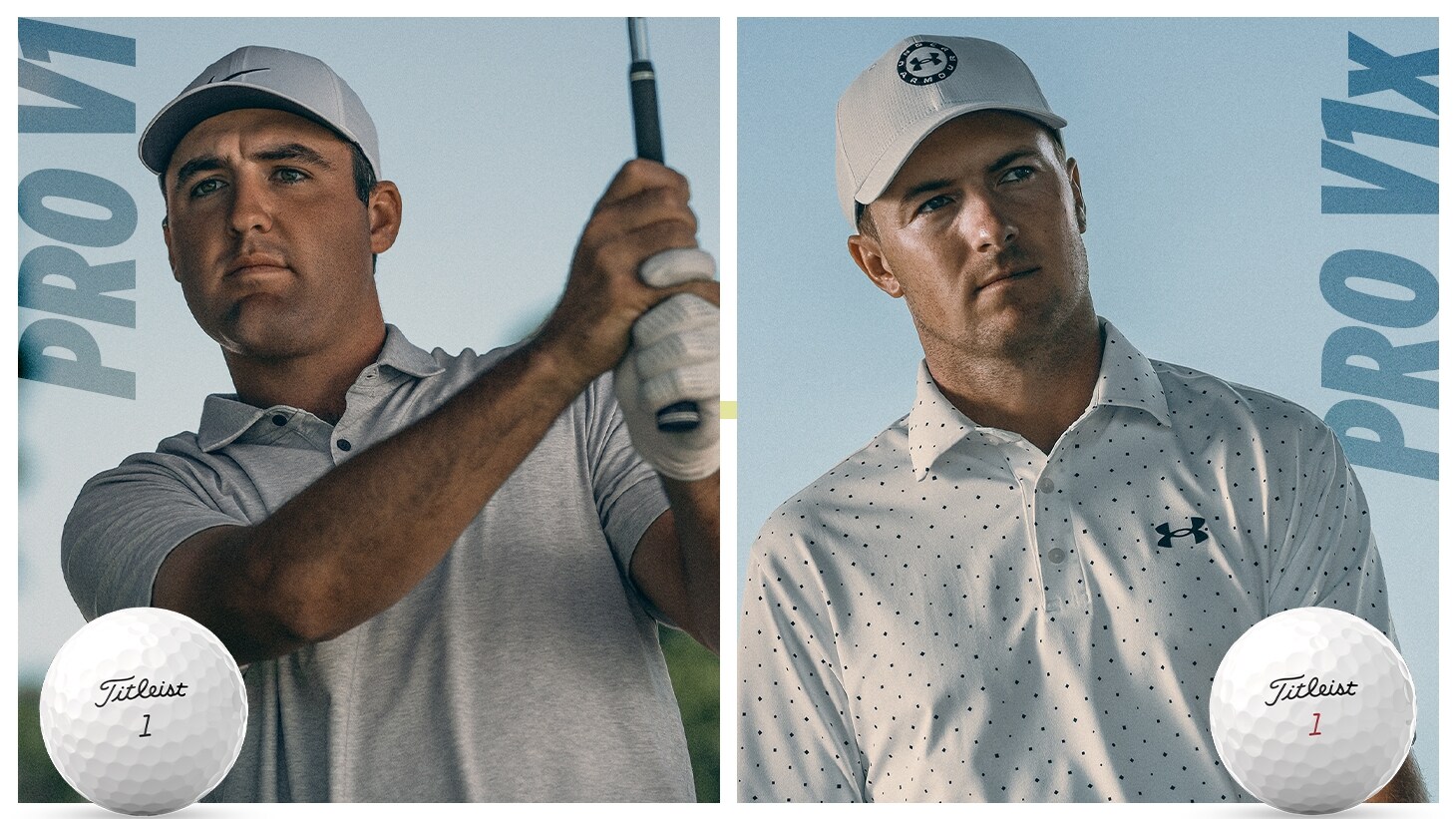 The first major championship of the year, The Masters, gets underway this Thursday. Who will capture the green jacket is still anyone's guess, but as we anxiously wait for the action to unfold at Augusta one thing is certain – more players will trust a Titleist Pro V1 or Pro V1x than any other golf ball at the 2023 Masters.
The first major championship of the year, The Masters, gets underway this Thursday. Who will capture the green jacket is still anyone's guess, but as we anxiously wait for the action to unfold at Augusta one thing is certain – more players will trust a Titleist Pro V1 or Pro V1x than any other golf ball at the 2023 Masters.
The official split between Pro V1 and Pro V1x players at The Masters is nearly 50/50, with 25 players teeing up Pro V1 and 34 playing Pro V1x. You may be asking, 'Why does Titleist design and manufacture two premium models instead of just one?'. The answer is simple. Players are unique and different players need different performance from their equipment. We don't want players to adjust their technique or shot selection to make a single ball work. We design different golf ball models so players can get the specific performance they need – without changing the things that they do so well, naturally.
Case in point, Scottie Scheffler and Jordan Spieth. Both are highly skilled. Both are long drivers of the golf ball and extremely creative around the greens. And both are Masters champions. Scottie, the defending champion this week, plays Pro V1. Jordan, who won his first major at Augusta in 2015, favors Pro V1x. Both players have succeeded at the very highest levels of the game, but they've done it in different ways.
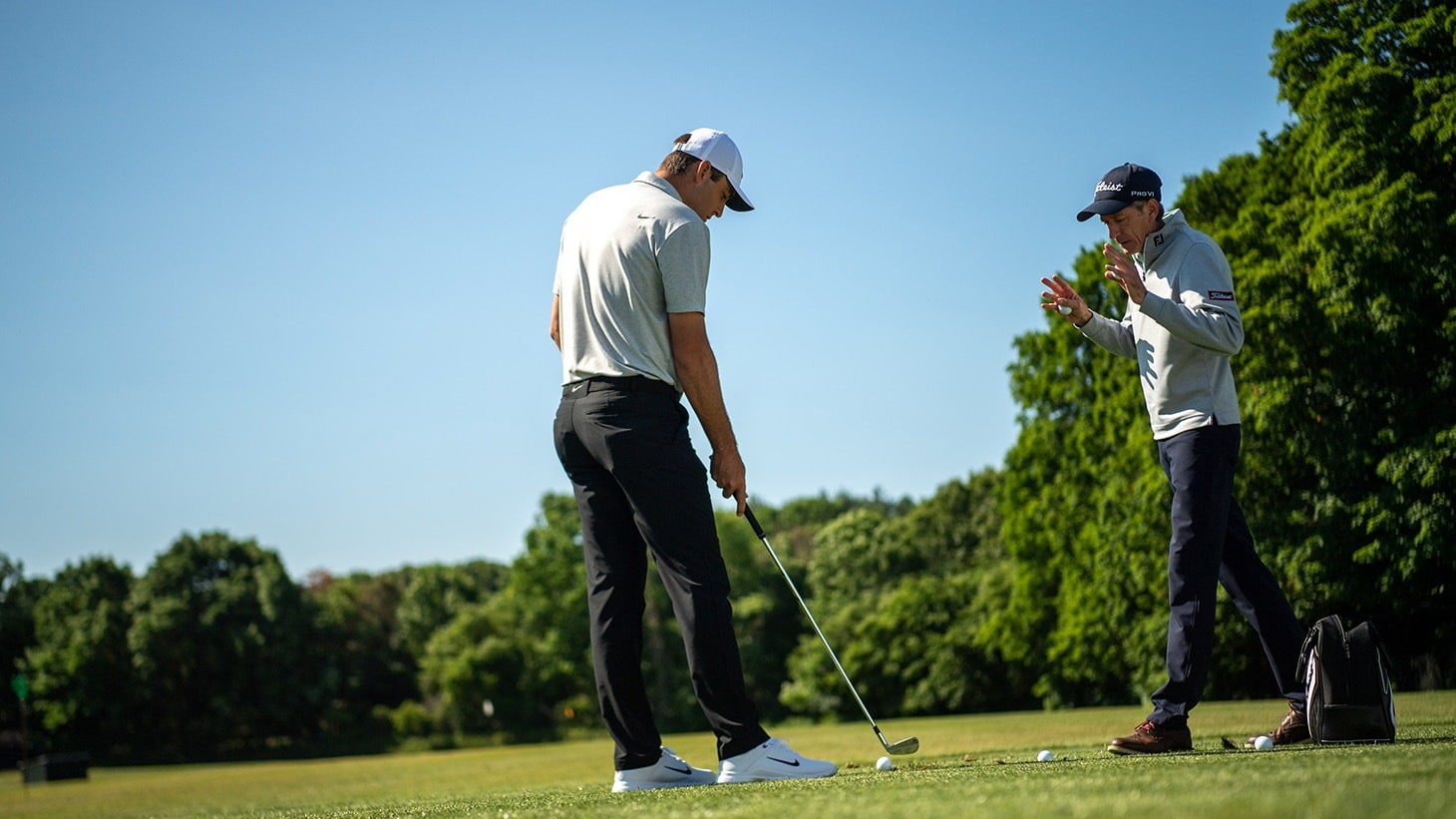 "Every player has their own set of launch conditions and where they like to see the ball fly in space on certain types of shots," said Fordie Pitts, Titleist's Director of Tour Research and Validation. Fordie is on the road more than thirty weeks out of the year, traveling to stops on numerous tours. He's worked extensively with Scottie and Jordan, and he serves as a liaison between elite players and Titleist golf ball development teams back in Fairhaven, Mass.
"Every player has their own set of launch conditions and where they like to see the ball fly in space on certain types of shots," said Fordie Pitts, Titleist's Director of Tour Research and Validation. Fordie is on the road more than thirty weeks out of the year, traveling to stops on numerous tours. He's worked extensively with Scottie and Jordan, and he serves as a liaison between elite players and Titleist golf ball development teams back in Fairhaven, Mass.
"Flight is a function of not only the speed and the spin of the golf ball, but also the aerodynamics."
Unlike some golf ball makers that apply the same dimple pattern to all their models, Titleist engineers develop unique aerodynamics packages for each model we create. Pro V1 utilizes a 388-dimple tetrahedral pattern that results in a penetrating, mid-flight trajectory. Pro V1x uses a 348-dimple tetrahedral pattern that is designed for those players who need to see their ball fly in a higher window.
"But flight and spin," Fordie said. "you can't look at them independent of each other. We do need to evaluate them together when we fit players. Scottie, for example, is a high ball hitter who doesn't need any help with trajectory. Pro V1 launches and reaches peak height right where Scottie's eye wants to see it. Pro V1x would fly too high, given the way he hits shots. He also puts a lot of spin on the ball. Pro V1 is designed to spin a bit less than Pro V1x, particularly on iron shots, so the V's combination of lower flight and lower spin suits Scottie very well. It allows him to control his shots to a higher degree."
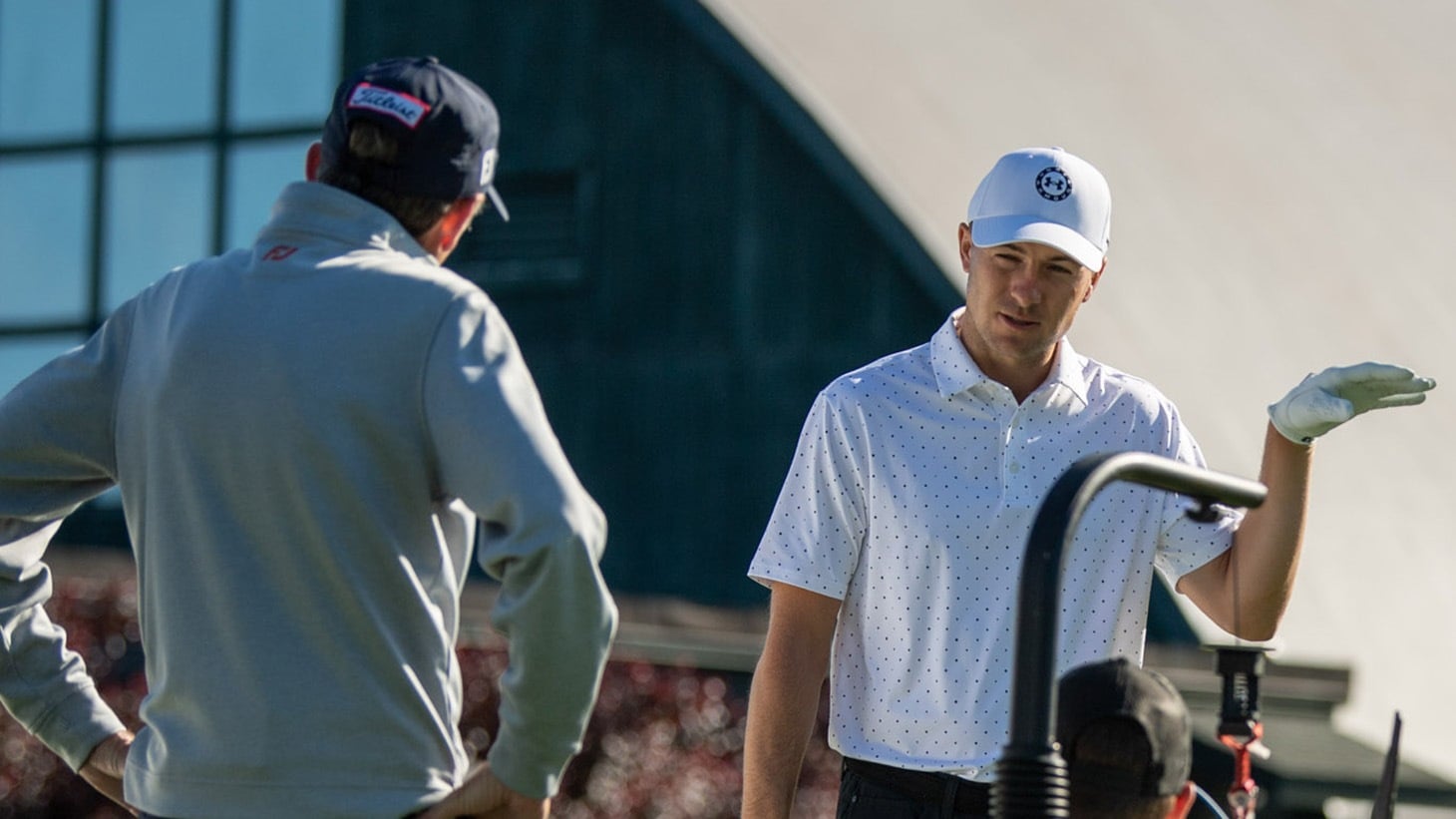 There's also an important correlation between trajectory and spin and stopping power on the greens. As Fordie explained, stopping power often has less to do with spin and more to with descent angle – how steeply the ball falls from its peak height down to the ground. This is particularly relevant on the PGA Tour, where course setups are long and the greens tend to be small and firm.
There's also an important correlation between trajectory and spin and stopping power on the greens. As Fordie explained, stopping power often has less to do with spin and more to with descent angle – how steeply the ball falls from its peak height down to the ground. This is particularly relevant on the PGA Tour, where course setups are long and the greens tend to be small and firm.
"There are going to be certain pin placements," Fordie said, "where players need to hit their approach shot shigh so that the ball will come down steeply and stop quickly. You'll see this a lot at The Masters. If you come in with your flight a little lower, even though you've got spin, it might take that big hop forward and it might just go 15, 20 feet past the pin as opposed to only going 5 or 7 feet past."
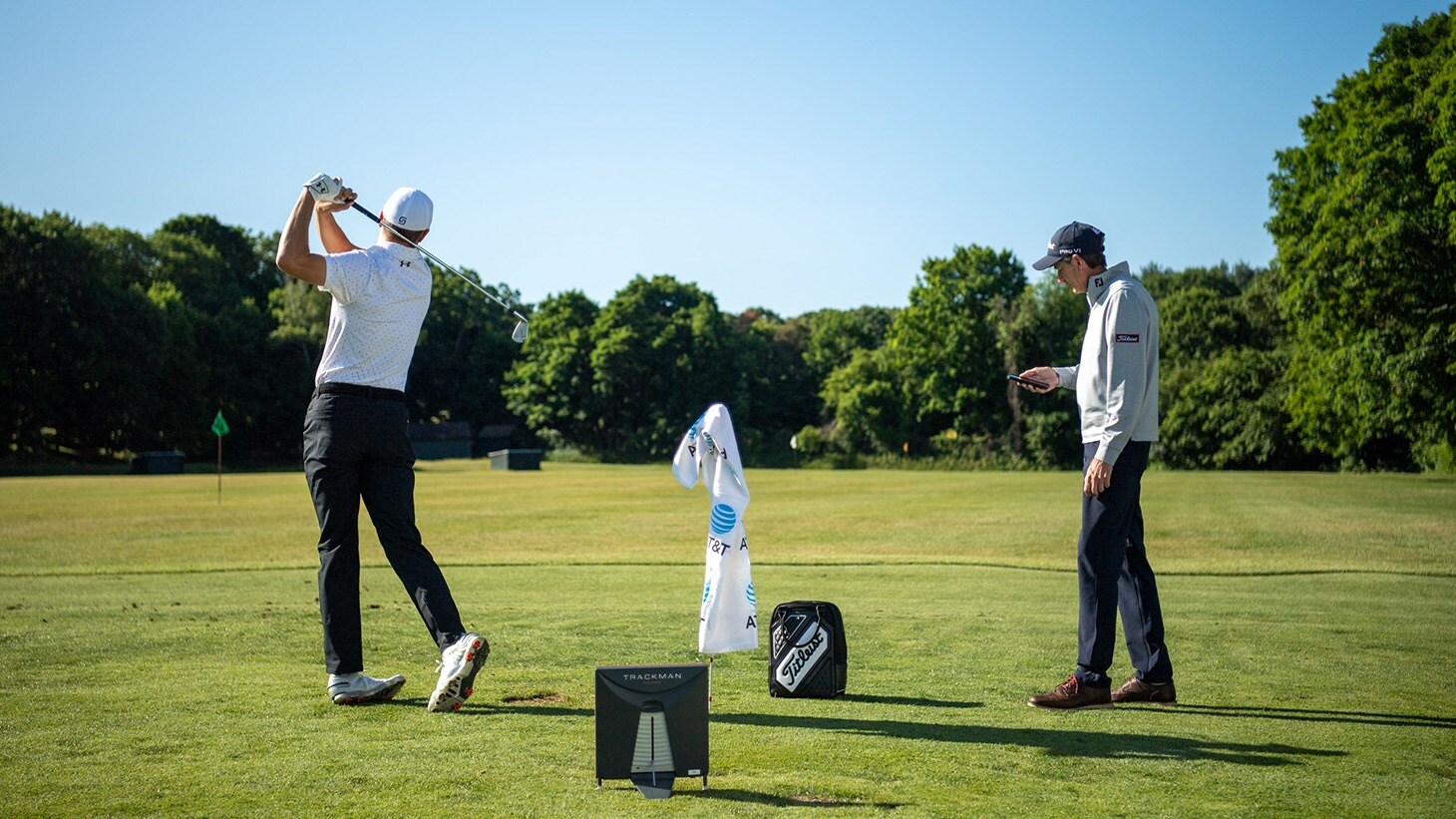 Because Pro V1x launches higher and reaches peak height further downrange than Pro V1, the descent angle of X is steeper than V. This is an important consideration for Pro V1x players like Jordan Spieth:
Because Pro V1x launches higher and reaches peak height further downrange than Pro V1, the descent angle of X is steeper than V. This is an important consideration for Pro V1x players like Jordan Spieth:
"I've got to be able to stop my long irons on greens on the PGA tour," Jordan told us. That's kind of first and foremost. Then I can kind of dial it in a little bit on and around the greens with the ball, but for me it starts with kind of the longer clubs, getting those right conditions. Pro V1x has that kind of performance and that spin as I get into the longer clubs, which is most important for me."
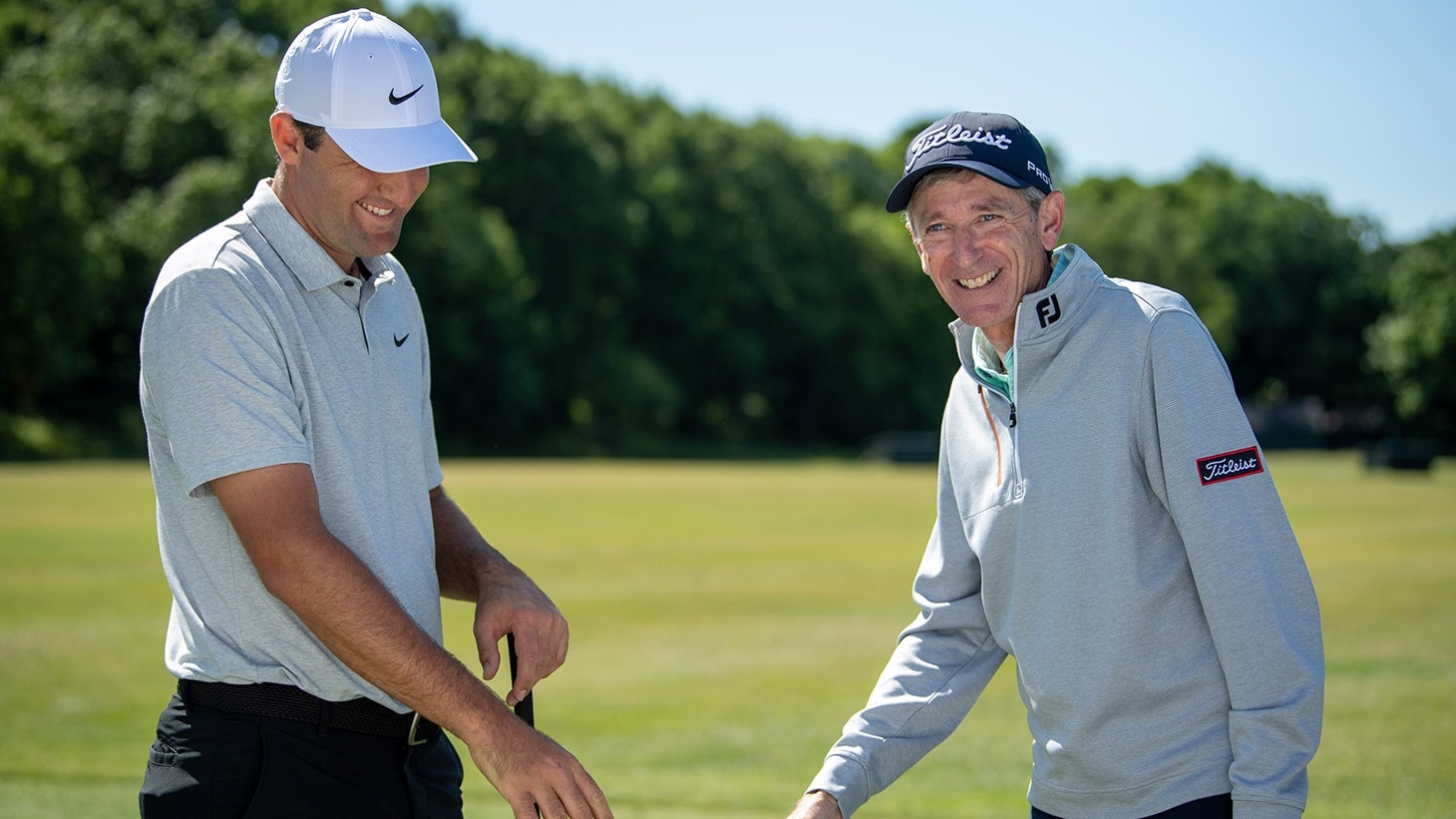 Regardless of which golf ball model a player chooses, perhaps the biggest performance consideration is consistency. For tour players, this means that the golf ball flies, spins and feels the way the player expects on all shots, regardless of conditions, regardless of what is at stake. As Scottie Scheffler said,
Regardless of which golf ball model a player chooses, perhaps the biggest performance consideration is consistency. For tour players, this means that the golf ball flies, spins and feels the way the player expects on all shots, regardless of conditions, regardless of what is at stake. As Scottie Scheffler said,
“I feel like you're always playing a different type of shot. Rarely am I just hitting a straight up stock shot. You're always trying to do a little something with the golf ball. And so having that consistency and knowing that golf ball's going to react the way I need it to react when it comes off the face and when it goes into the green - especially when you get in a Tour setup where the greens are crazy firm, the wind is blowing - you've got to have total control over where that golf ball is going to go. I feel like I've gotten that consistency with the Pro V1 over the years, and I really trust how it reacts.”
• • •
Thanks to Scottie, Jordan and Fordie and good luck to all of #TeamTitleist at the 87th Masters!
Scottie Scheffler | Why I Play the Titleist Pro V1
Jordan Spieth | Why I Play the Titleist Pro V1x